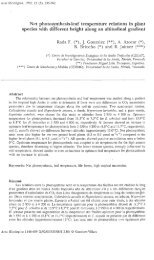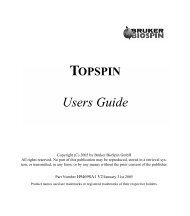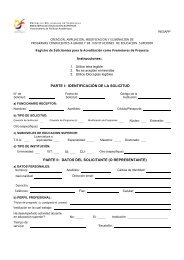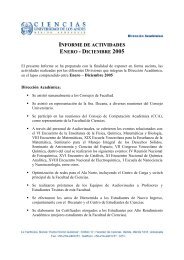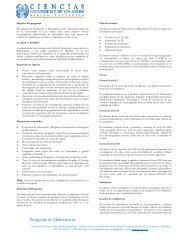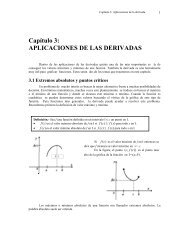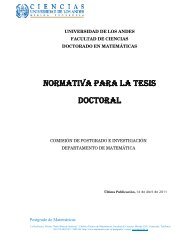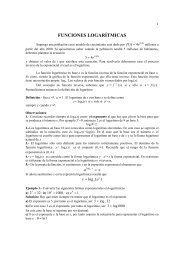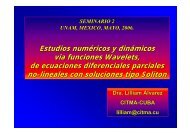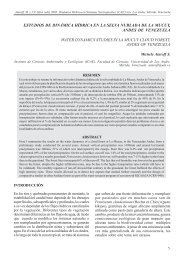Diffusion Manual Outline
Diffusion Manual Outline
Diffusion Manual Outline
Create successful ePaper yourself
Turn your PDF publications into a flip-book with our unique Google optimized e-Paper software.
3<br />
Chapter 1<br />
Section 1.1<br />
Introduction to <strong>Diffusion</strong><br />
Introduction<br />
Self-diffusion is a measure of the translational motion of a molecule. <strong>Diffusion</strong> is<br />
closely related to molecular size as illustrated by the Stokes-Einstein equation seen<br />
below:<br />
D = k T<br />
f<br />
where k is the Boltzman constant, T is the temperature and f is the friction coefficient.<br />
For the simple case of a spherical particle of a hydrodynamic radius r s in a solvent of<br />
viscosity η, the friction factor is given by f = 6 π η r s<br />
Translational diffusion can be used to determine the size and shape of individual<br />
molecules as well as molecular aggregates. This provides an excellent way of analyzing<br />
complex mixtures without having to physically separate out each individual component.<br />
Pulsed-field gradient (PFG) NMR can be used to measure translational diffusion<br />
by applying externally controlled magnetic field gradients. These gradients spatially<br />
encode the position of each nuclear spin. This spatial distribution can be decoded after<br />
waiting a short time by applying a second gradient. If the waiting time is very short<br />
between the encoding and decoding gradients the spins will not have had a chance to<br />
change position and in turn the magnetization will refocus without a net phase change.<br />
However the spins that have moved during the waiting time between the encoding and<br />
decoding steps will acquire a net phase change. The summation of the accumulated<br />
phases over the entire sample will lead to partial cancellation of the observable<br />
magnetization and hence an attenuation of the NMR signal. This signal attenuation is<br />
dependent on the strength of the applied gradients, the time between the gradients<br />
(diffusion time) and the diffusion coefficient of the molecules under study.<br />
Section 1.2<br />
Some Theory<br />
Nuclear spins within a homogeneous magnetic field precess at the Larmor<br />
frequency according to the equation<br />
ω o = γB o<br />
where ω o is the Larmor frequency<br />
γ is the gyromagnetic ratio and<br />
B o is the strength of the magnetic field




